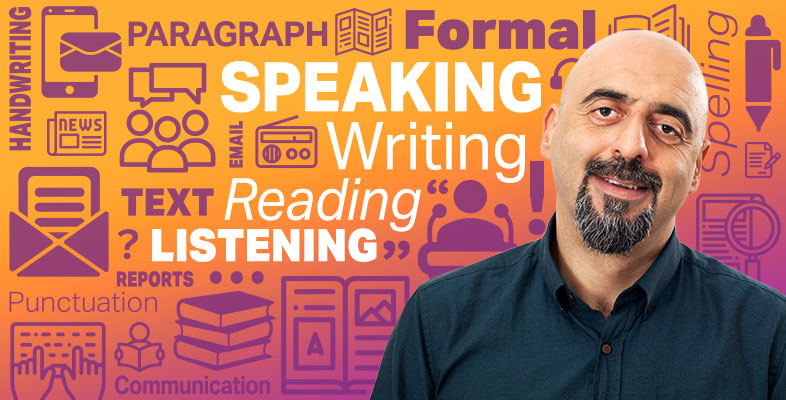2.3 Detailed reading
Detailed reading means reading something carefully to get accurate information. You would do this if you had to read long or complicated material in a book or a report.
You have seen how skimming and scanning can help you to decide:
- how useful a text is going to be
- how much time you need to spend on it.
To understand a text fully, however, you have to read it a lot more carefully. This does not mean that you have to read every word or that you have to read slowly. The secret is to read efficiently.
People who are not used to reading for a purpose often read phrases or passages several times because they have not fully understood them the first time. But re-reading a passage several times will not make you a good reader.
It is more important that you set up a rhythm of reading that lets you read smoothly. If you come across a difficult phrase or passage, carry on, but make a note that you may have to come back to it later.
The same applies to difficult or unfamiliar words – always stopping to use a dictionary will not make you an efficient reader. In some cases, you may be able to predict the meaning of a word from the rest of the sentence. When you come across an unfamiliar word, try reading the rest of the sentence to see if it provides any clues as to what the word might mean. If this doesn’t work, keep a note, which you can come back to later, of where the word was and go back to it after you have finished reading the whole document.
Activity 9 Practice with reading
Read the passage below. As you are reading, don’t stop if you come across a word or phrase that you don’t understand, but make a note of it so that you can go back after you have finished the whole thing.
When you have finished, look in a dictionary and write down the meanings of the words or phrases that you didn’t understand.
Then read the passage again and see if it makes sense to you. Use the box below to summarise the main points.
There is no official requirement as to the number of first aiders to workers so employers tend to have no fixed policy about the number of first aiders they need in their company.
The reluctance of employers to have a fixed policy is financial. Companies are reluctant to take on something that could cost them a great deal of money in the long run. The number of persons who need to be trained as first aiders should depend on the size of the company and what it produces. A small office will only need one first aider, while a large factory will need more.
Employees also need to realise that they have a duty to keep the workplace safe. They must all work together to keep the work environment safe and be constantly reminding their colleagues that they need to know about health and safety.
Discussion
You will have gained some idea of the meaning of the passage from the first reading, but at first glance there were not many clues as to what it was about. This was because it didn’t have any titles, subheadings or words or phrases in bold to give you guidance and show you which parts of the passage were most important.
Now check your summary points against these. Yours will probably be slightly different.
- Employers tend to have no fixed policy on the number of first aiders they need.
- Employers are reluctant to have a fixed policy due to cost implications.
- Employees also have a duty to keep the workplace safe.
Activity 10 Recap on scanning, skimming and detailed reading
Write down what you understand by scanning, skimming and detailed reading and give one or two ideas of when you would use each.
Discussion
Here’s a summary of what each term means and when you might use it.
| Way of reading | What it means | When you would use it |
|---|---|---|
| Skimming | Looking at the title, section headings and subheadings and pictures to get an idea of what the text is about. | When looking at a book and deciding if it is going to be worth reading. |
| Scanning | Looking through a text very quickly to find specific information or key words that you are looking for. | To find a particular piece of information; to preview material before reading it in detail; or to check that you understand something after reading it. |
| Detailed reading | Reading something carefully to get accurate information. | When reading long or complicated material such as books or reports. |
Activity 11 Skimming, scanning or detailed reading?
For each example below, decide whether the method of reading you would be most likely to use would be skimming, scanning or detailed reading. Then drag it to the appropriate column.
Discussion
You will have noticed that right and wrong answers were not given for this activity. This is because for all of these examples, skimming, scanning or detailed reading may all be appropriate, depending on the context. However, here are the methods of reading that I would most likely use for each:
| Skimming | Scanning | Detailed reading |
|---|---|---|
Deciding whether to buy a book Reading a newspaper |
Checking a bus timetable Reading a gas bill Finding a holiday in a travel brochure Finding an underground station on a map |
Summarising a report at work Reading a hire purchase agreement Reading a novel |
In this section you looked at:
- skimming, scanning and detailed reading
- reading techniques to help reading for meaning.

